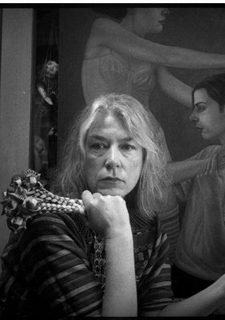 | Nacida en el 1947 en los Estados Unidos, Lani Irwin ha frecuentado la universidad sea en los Estados Unidos (Washington DC)que en Europa (Grenoble y Monaco de B.). Desde el 1974 ha realizado numerosas exposiciones, sea personales que importantes muestras de grupo. Está representada por la Gallery K. de Washington DC desde el 1981 y por Katharina Rich Perlow de New York desde el 1996. Sus trabajos pertenecen a varios museos, entre ellos el National Museum of American Art, la Corcoran Gallery y el Hirshhorn Museum and Sculpture Garden en Washington DC y el Huntington Museum en West Virginia , como también en numerosas colecciones privadas. En el 1987 se trasladó en Italia, manteniéndose siempre en contacto con las galerías y la cultura artística americana. En el 1995 ha ganado el Pollock-Krasner Foundation Grant.
|
  | "Lani Irwin: Paintings," Katharina Rich Perlow Gallery, New York City (October 2000) |  | Jill Wechsler, "Lani Irwin," American Artist, June 1983 |  | Richard Cavendish, The Tarot,New York: Harper & Row, 1975 |  | Bill Butler, Dictionary of the Tarot New York: Schocken, 1975 |  | Jamake Highwater, The Language of Vision: Meditations on Myth and Metaphor, New York: Grove Press, 1994 p. 210. the Roman Pasha, "The Inanimate Incarnate" in Fragments for a History of the Human Body, Part One, ed. by Michael Feher with Rom |  | Kay Turner, Beautiful Necessity: The Art and Meaning of Women's Altars, New York: Thames & Hudson, 1999, p. 96.
|  | Gail Leggio, American Arts Quarterly, 2001 Vol. XVIII, No.2 |  |
JOSEPH JENNINGS, LANI IRWIN'S ALLEGORIES SHOW, Rome, July 2003
Lani Irwin's new series of paintings named Allegories
challenge the viewer to directly engage the human nude figure without material or sexual diversions. In these ten |
|